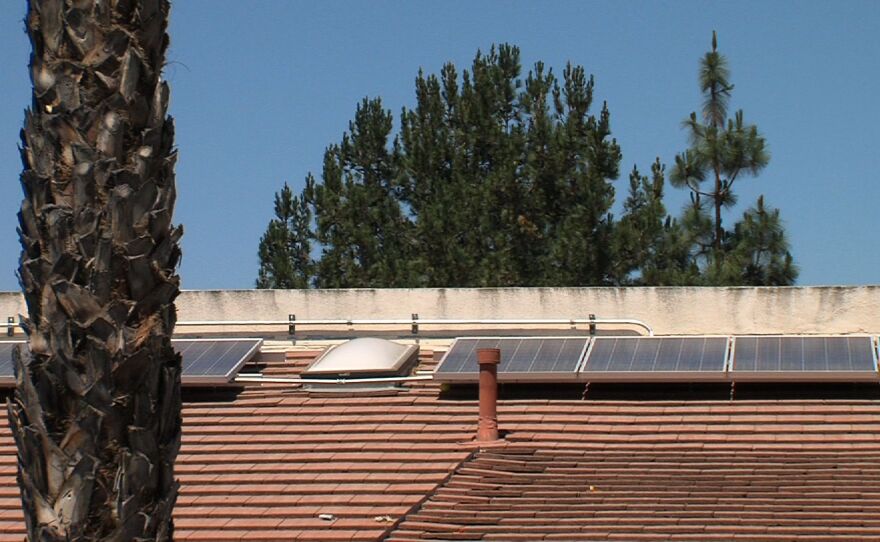Many residents at the 92-unit Park View Terrace apartment complex in Poway struggle to make a living wage. Single mom Carla Esparza has lived here nine years; she enjoys watering the plants on her front porch.
Her daughter Isebella helped out one day recently. The plants are thirsty because the sun beats down on the inland valley. The same sun that bakes Esparza's plants also shrinks her electric bill, thanks to the solar panels on the roof.
"Before, I couldn't put the AC on much because I was afraid about how much my bill was going to be," Esparza said. "But now with the solar panels, I don't worry about it. It is wonderful."
The electric bill for the mother of three has been cut in half by the complex's solar system, and that means a lot when it comes to the family finances.
"With that money that I'm saving, I can buy other things that I was not buying before," Esparza said. Now she can use the savings on other things, like a movie or dinner out. The savings give her budget breathing room.
Gabe del Rio, chief operating officer at the nonprofit affordable housing developer, Community HousingWorks, said Park View Terrace is one of the organization's seven solar-powered affordable housing projects.
"Yeah, absolutely ... there's an economic development component to keeping that wealth in people's pockets and not spending it on energy costs," del Rio said.
The economics made sense for the complex and the residents.
"We're talking about saving 58 percent, on average, of our residents' cost. When you add it up across 92 apartments, it's $1,700, a month. (That's money) being saved by residents here that frankly can be spent elsewhere in our economy," del Rio said.

President Barack Obama recently recognized Community HousingWorks as a leader for its efforts to bring solar power to affordable housing.
The president's goal is for affordable housing projects around the nation to have 100 megawatts of solar capacity.
That's enough to power 100,000 homes.
Community HousingWorks already has 1 megawatt of generating capacity on rooftops, and there are plans to add another 2.5 megawatts.
"We tend to pay attention to economics a little bit differently than a for-profit owner does," del Rio said. "And so that's why you see affordable owners actually paving the way."
The region has embraced solar power, and a recent Environment California Report found there's enough solar capacity in San Diego County to power about 120,000 homes.
But multifamily buildings lag behind.
"Solar has just become a very normal thing," said Ben Airth, senior project manager at the California Center for Sustainable Energy. "Just like any appliance, or anything that you would do to your home. We're hearing ads on the radio all the time. We're seeing it in the newspaper. Neighbors are talking about it. It's become very common."
But solar is not so common on multifamily housing units and San Diego Gas & Electric's numbers back that up. The utility said only 2,499 units in multifamily complexes plug into the sun. Compare that to 37,676 residential and business customers that sell power back to the utility, a practice called net metering.
It appears the biggest hurdle is still the upfront cost of a multifamily system, Airth said, and it can be daunting. The upfront cash is just one problem.
"Financing, when you think of how it's going to be paid for. Logistics, when you think of where it is going to be put. How you're going to get that power to the tenants," Airth said.
Once it's figured out, the utility can then tote up the energy produced, split up the savings among units and credit individual customer bills. It's called virtual net metering.
The Mission Heights condominium complex in Mission Valley took advantage of those rules to install a solar-powered, hot water system that serves the entire complex. The $80,000 system replaced a conventional boiler that just wore out.
"It is up to the home owners association, like we have here, or the apartment owner to determine what that financial outlook looks like in order for them to actually give the go ahead on the project," Airth said.
There are a lot of questions about why solar panels are more popular on single-family homes, and the U.S. Energy Department is funding a San Diego study that will look at just that. The findings might identify a strategy that could lead to more solar systems at multifamily complexes.






